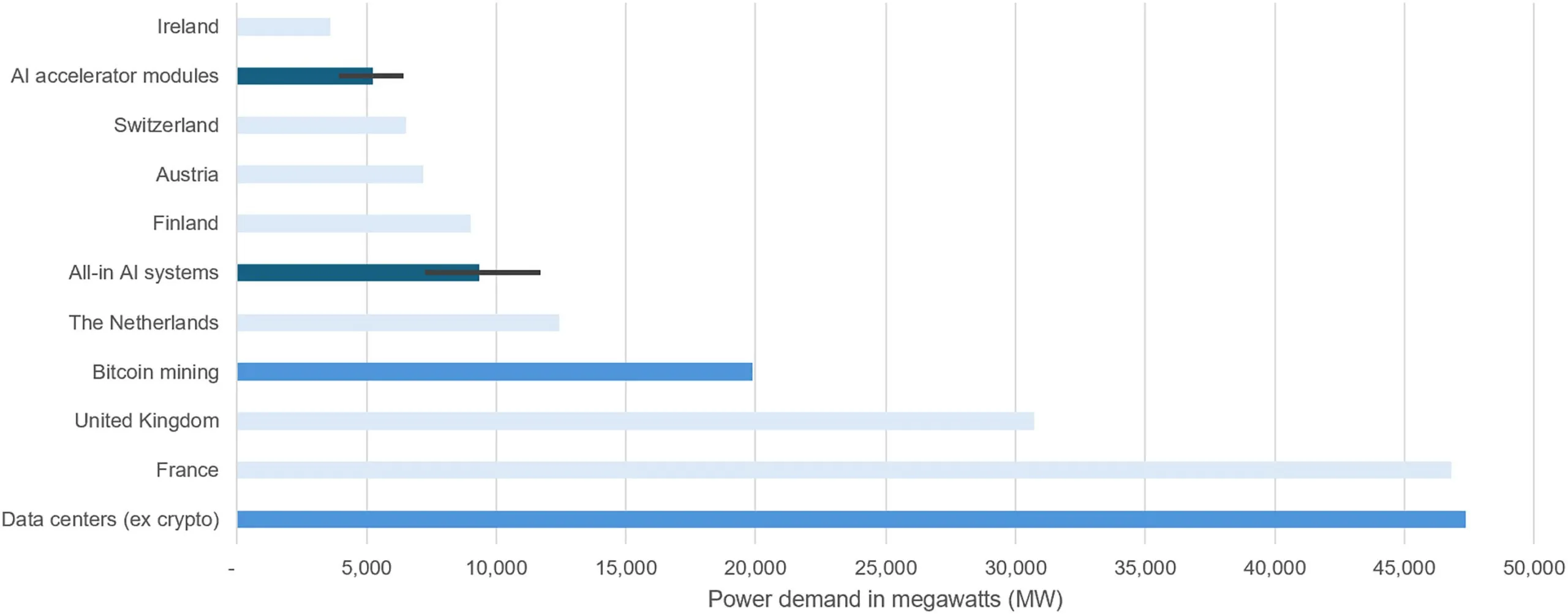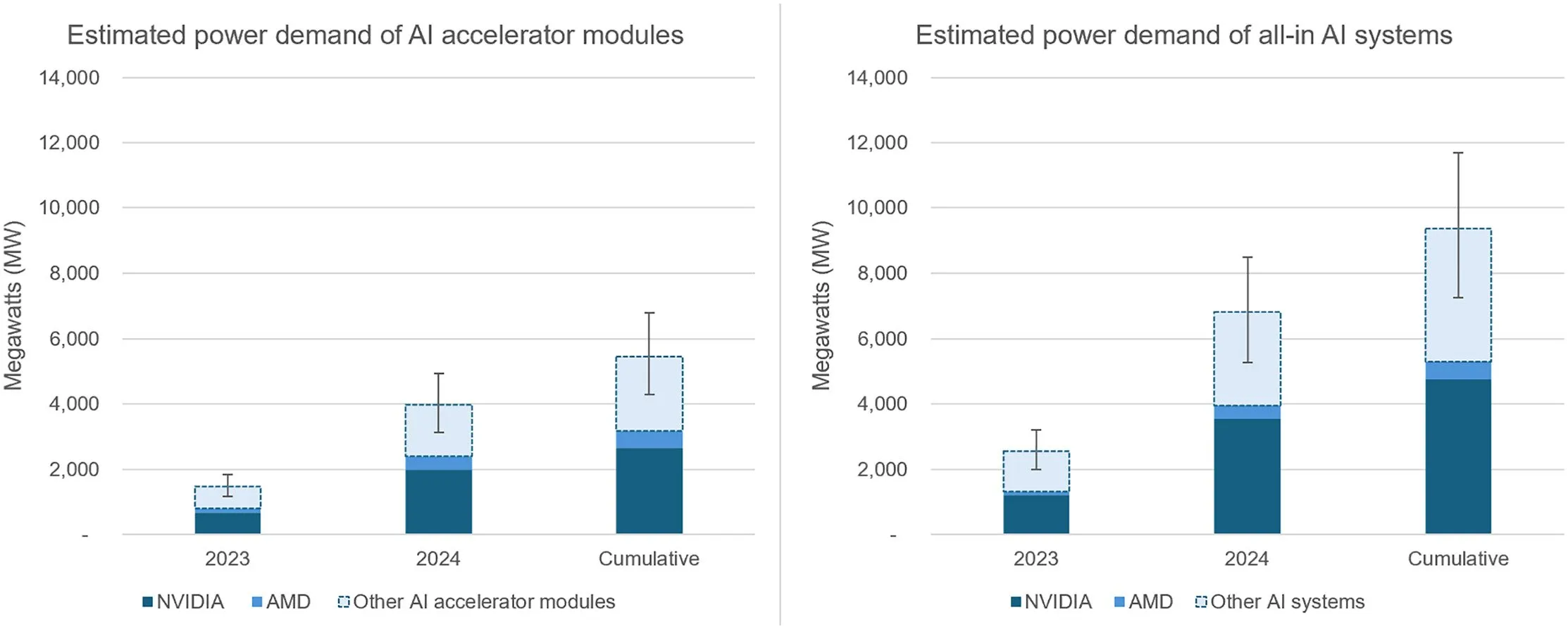Study Finds AI Energy Consumption Will Surpass Bitcoin's By Year's End

Do you remember when Elon Musk crashed the Bitcoin price by tweeting that Tesla would stop accepting it due to environmental concerns, and everyone was concerned about the negative impact of mining on the environment? That happened in 2021, and many have not forgotten.
Yet today his xAI project is developing what may be the world's largest supercluster for artificial intelligence, while governments rush to introduce legislation to promote AI, with little thought given to the energy consumption.
A new peer-reviewed paper published in the scientific journal Joule claims that artificial intelligence could account for up to 49% of global data center electricity consumption by the end of 2025, surpassing even Bitcoin's known energy appetite.
Alex de Vries-Gao, a PhD student at Vrije Universiteit Amsterdam and a frequent critic of Bitcoin’s energy costs, found that AI’s energy needs could reach 23 gigawatts by January 1, which equates to about 201 terawatt-hours per year. Bitcoin currently consumes about 176 TWh per year.
 Image: Joule
Image: Joule
“The largest tech companies are well aware of this trend, with corporations like Google even referring to a ‘power crisis’ in their efforts to expand data centers,” de Vries-Gao wrote on LinkedIn. “However, these companies prefer not to disclose specific numbers.”
“We haven’t seen anything like this since ChatGPT sparked a wave of interest in AI,” he added. “As a result, it’s still nearly impossible to get an accurate picture of AI’s real energy consumption.”
Unlike Bitcoin’s transparent energy consumption, which can be easily calculated from the network’s hashrate, AI’s energy needs remain deliberately opaque. Companies like Microsoft and Google report rising energy consumption and carbon emissions in their 2024 environmental reports, citing AI as the primary driver of this growth. However, these companies only provide aggregate data about their data centers, without focusing on AI-related consumption.
With tech giants refusing to provide AI-specific energy cost data, de Vries-Gao began analyzing chips. He kept an eye on Taiwan Semiconductor Manufacturing Company’s chip packaging capabilities, since nearly every advanced AI chip requires their technology.
The math, de Vries-Gao explained, works like a business card analogy. If you know how many cards fit on a sheet and how many sheets a printer can handle, you can figure out the total number of products. De Vries-Gao applied this logic to semiconductors, analyzing earnings reports in which TSMC executives acknowledged “very limited capacity” and an inability to “fulfill 100% of customer needs.”
His findings: Nvidia alone was estimated to use 44% and 48% of TSMC's CoWoS capacity in 2023 and 2024, respectively. If AMD were to take another share, the two companies could produce enough AI chips to consume 3.8 GW of power before even considering other manufacturers.
 Image: Joule
Image: Joule
De Vries-Gao's forecast shows that AI will reach 23 GW by the end of 2025, barring additional production increases. TSMC has already confirmed plans to double its CoWoS capacity again in 2025.
Demand for electricity is unlikely to slow. Nvidia and AMD have already announced record revenues, and OpenAI has announced Stargate, a $500 billion data center project. Indeed, AI is the most profitable business in tech, with each of the world’s three largest tech companies eclipsing the total market cap of the entire crypto ecosystem, which is $3.4 trillion.
So it looks like the environment will have to wait.
Source: cryptonews.net



